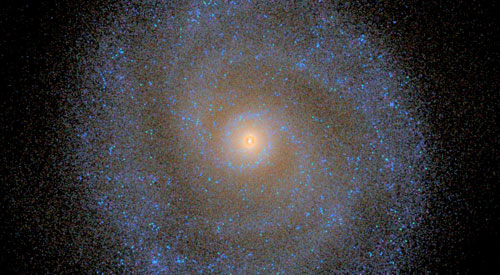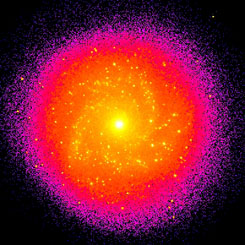
“Stars without Borders: Radial Migration in Spiral Galaxies” was an international workshop held in Medana, Slovenia during May 21-24. This was the first international workshop ever on the emerging field of stellar migration in disk galaxies. It was chaired by Dr. Rok Roskar (University of Zurich) and Dr. Victor P. Debattista (UCLan). Over 40 scientists, from across Europe, Australia and North America, attended the workshop. The workshop was sponsored by the University of Central Lancashire, the University of Zurich, the European Science Foundation, the University of Ljubljana and the Slovenian Research Agency. Local organisation was provided by Agency Marica (Medana).
 Galaxy formation is one of the outstanding problems in modern cosmology. To address this problem, a large number of surveys are planned on in progress to measure the positions, velocities, ages, and chemistry of stars in the nearest galaxy, our own Milky Way. This will culminate in Gaia, the satellite to be launched by the European Space Agency to map one billion stars in the Milky Way. These large databases of stars are then intended for deciphering the formation of the Milky Way in a manner analogous to archaeology. However, in recent years it has become clear that the Galactic archaeologist has to deal with strata that are jumbled. This is because, contrary to what was assumed for over thirty years, stars born at one radius within a galaxy do not need to remain at that radius. Instead they can gain or lose energy from spiral arms and dramatically alter their orbital radius, mixing stars that formed in very different places together. Just how much of this migration takes place, where it is easiest to detect, and what the mechanisms responsible for it was the subject of the workshop.
Galaxy formation is one of the outstanding problems in modern cosmology. To address this problem, a large number of surveys are planned on in progress to measure the positions, velocities, ages, and chemistry of stars in the nearest galaxy, our own Milky Way. This will culminate in Gaia, the satellite to be launched by the European Space Agency to map one billion stars in the Milky Way. These large databases of stars are then intended for deciphering the formation of the Milky Way in a manner analogous to archaeology. However, in recent years it has become clear that the Galactic archaeologist has to deal with strata that are jumbled. This is because, contrary to what was assumed for over thirty years, stars born at one radius within a galaxy do not need to remain at that radius. Instead they can gain or lose energy from spiral arms and dramatically alter their orbital radius, mixing stars that formed in very different places together. Just how much of this migration takes place, where it is easiest to detect, and what the mechanisms responsible for it was the subject of the workshop.
The workshop included theorists and observers, who deployed a wide range of techniques to predict and study the consequences of migration. The even mix of junior and senior participants augers well for radial migration to continue to be an important subject of study for years to come. In recognition of the growing importance of this field, Science, the journal of the American Association for the Advancement of Science, is publishing a Perspectives Article in the 19th October issue (Volume 338 page 333) describing the results and implications of this meeting.
